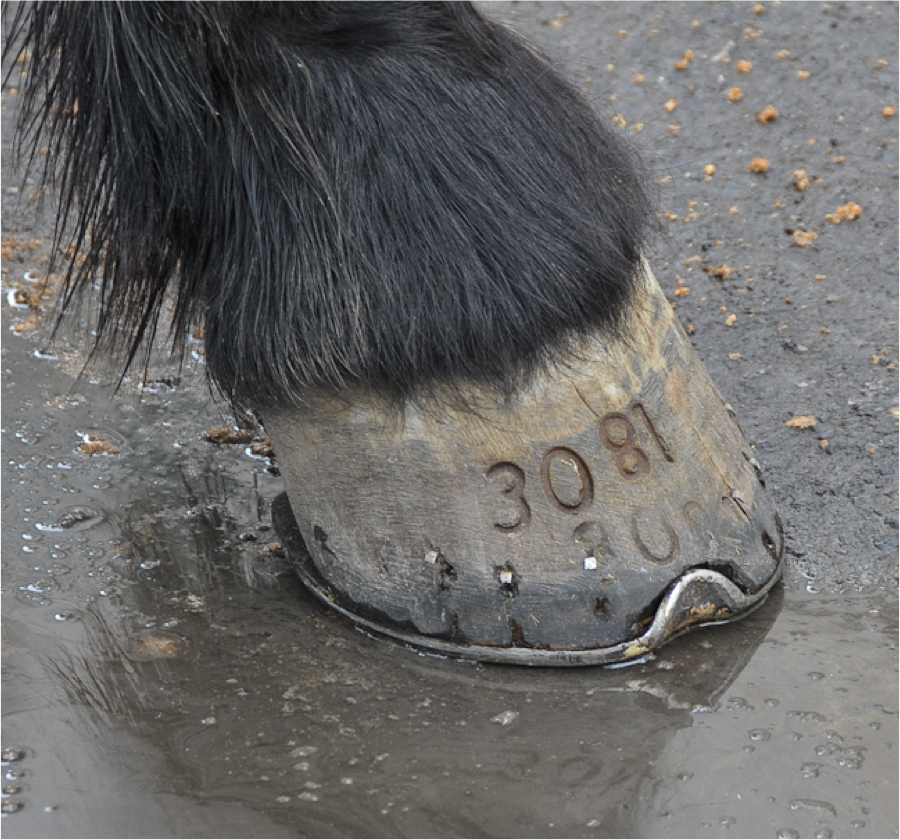FEATURES
For as long as there has been a Central Park in New York City, there have been horse-drawn carriages to provide rides. In fact, the grounds’ original 778 acres were designed with just that in mind.
“In 1858, Frederick Law Olmsted and Calvert Vaux designed Central Park’s landscape to be seen from the back of a carriage,” explains Christina Hansen, a horse carriage driver. “Even in the mid-19th century, most people in New York City could not afford to own horses. So, hiring a cab or a livery carriage and being driven through the park was a novel experience.

Each of New York City’s carriage horses has a 4-digit number that is burned into its hoof wall. Notice an older number that has grown down toward the toe. Photo by Dr. Harry Werner
“It’s the same today,” she continues. “Most people do not get to interact with or experience horses in their daily lives. Yet, they can come to Central Park and take a carriage ride.”
However, the rides are in danger of fading into the pages of history. (To learn more, read Jerry Trapani’s article on Page 76 of the May/June 2014 issue of American Farriers Journal.) Mayor Bill de Blasio and New Yorkers for Clean Livable and Safe Streets are pushing to abolish horse-drawn carriages despite strong public support for the industry.
Manhattan Chamber of Commerce members overwhelmingly want the industry to persevere, as do 64% of New York City voters. In addition, two state lawmakers have introduced legislation that would protect the time-honored tradition.
The drivers enhance the heritage of horse-drawn carriages by decorating their ornate leather and felt-lined carriages with colorful flowers, fitting their horses with plumes, and themselves wearing top hats and coats, as Hansen does. Yet, there are other traditions that carry on, such as serial numbers that are burned into a hoof wall.
“It’s a 4-digit number that every horse has on its left front foot,” explains Lancaster County, Pa., farrier Aaron Hoover, who provides hoof care for about 40% of all the New York City carriage horses. “Every stable has a set number made up on a tool similar to a branding iron. A stable worker heats it up and holds it against the hoof.”
The tradition has its roots in the military. The farrier and army quartermaster took charge of the records of each horse by burning serial numbers into the near front hoof. The farrier in the British Household Cavalry carried a large pike and axe, which were used to dispatch an injured horse and remove the hoof for record keeping.
Jerry Trapani is an American Farriers Association certified farrier who has been shoeing horses for more than 50 years.







Post a comment
Report Abusive Comment